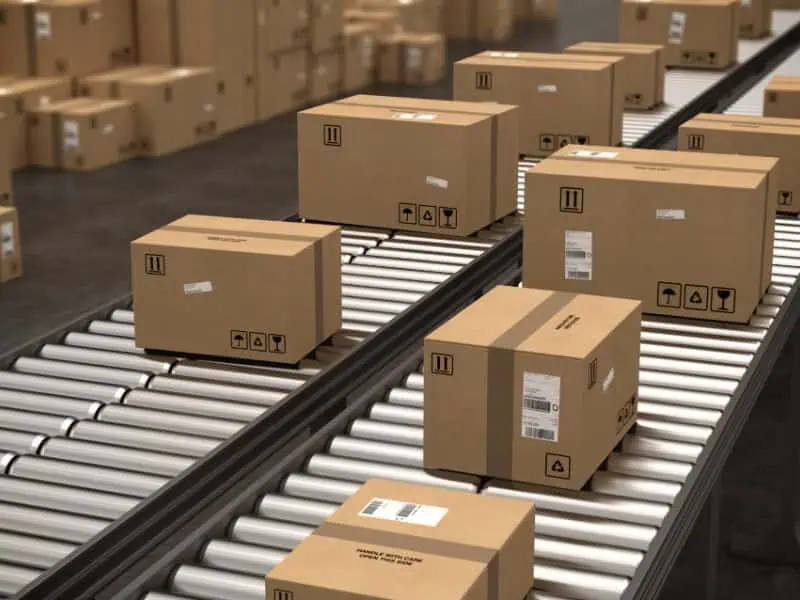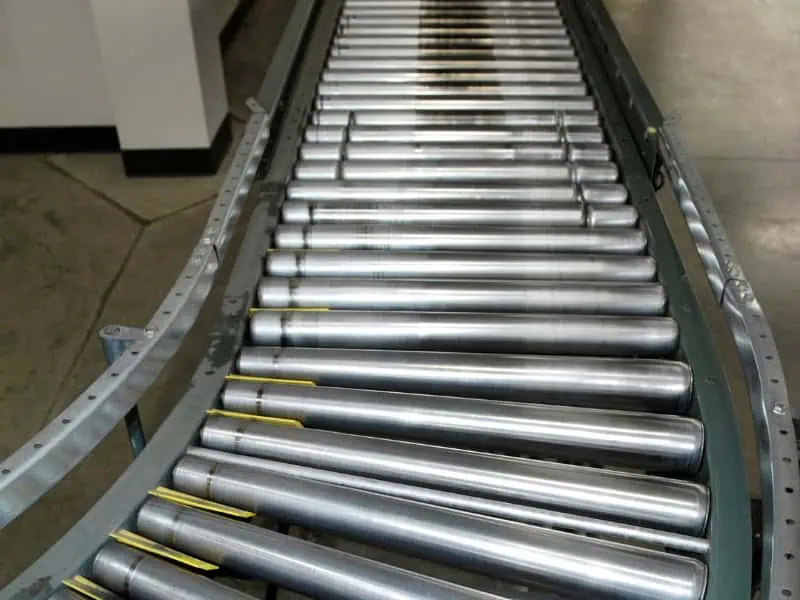Modern warehouses rely heavily on effective material handling systems, and gravity conveyor design plays a vital role in improving operational efficiency. An optimised conveyor layout reduces friction, downtime, and unnecessary energy use. By refining angles, alignment, and roller quality, warehouses can achieve smoother product flow and fewer bottlenecks. Conveying & Hoisting Solutions applies expert gravity conveyor design principles to help businesses streamline operations, improve safety, and increase throughput. This article explores how thoughtful gravity conveyor design influences time savings, energy reduction, and workplace performance to create a more productive and cost-effective warehouse environment.
What causes inefficiency in warehouse conveyor systems?
Inefficiency in warehouse conveyor systems often stems from design flaws that interrupt product flow and waste valuable resources. When layout planning or roller selection is poorly executed, it can increase manual intervention and slow throughput. Many warehouses underestimate how small configuration issues can impact larger operations. A key factor is how the design balances product weight, roller spacing, and slope gradient. Without proper calibration, items can stall, pile up, or even sustain damage. Here are the main contributors to inefficiency in conveyor systems:
- Improper roller spacing creates inconsistent product movement, forcing staff to step in manually and causing workflow delays.
- Lack of ergonomic access around conveyor paths increases walking distances for workers and reduces handling efficiency.
- Poor maintenance scheduling leads to roller wear, uneven rolling speeds, and additional energy strain on powered sections.
- Ineffective load distribution results in conveyor strain and premature component wear, limiting operational lifespan.
When a warehouse isn’t efficient, more time goes into fixing problems than getting work done. Focusing on good design early helps stop these issues before they become expensive.
Why do many warehouses struggle with inefficient material flow?
Warehouses often face problems with poor material flow because their systems aren’t regularly reviewed or updated. As product ranges expand or order patterns change, old conveyor setups can’t keep up. A gravity conveyor design that once worked well can quickly turn into a bottleneck. Here are the most common reasons warehouses face flow inefficiencies:
- Unbalanced layout orientation where inbound and outbound zones overlap, forcing materials to cross paths unnecessarily.
- Inadequate roller inclination that either speeds up or slows down products at the wrong time, reducing control and throughput.
- Unplanned intersections where workers constantly stop the line to merge or reroute loads manually.
- Poor integration with picking and packing stations, creating idle time and inconsistent task completion rates.
A well-planned layout ensures materials move without unnecessary handling. If you’re rethinking your setup, you might explore reliable gravity conveyor hire options for smoother operations — a smart way to test improvements before making permanent changes. When layouts are refined with smart design choices, operations become safer, faster, and far more predictable.
Could poor conveyor alignment reduce productivity and safety?
Poor conveyor alignment directly affects productivity and safety by causing jams, uneven loads, and unpredictable motion patterns. Even a small misalignment can compound over distance, leading to stoppages and potential worker hazards. Here are the critical risks linked to poor alignment:
- Increased product jams disrupt workflow and can result in damage to goods or the conveyor itself.
- Unstable product travel puts items at risk of toppling, particularly in steep or crowded sections.
- Higher maintenance frequency arises from bearings and rollers wearing unevenly, driving up downtime costs.
- Reduced operator safety due to unpredictable product behaviour, which can trigger accidental contact or injury.
When misalignment issues are left unresolved, maintenance teams face ongoing clean-up and safety reviews. Realigning conveyors not only enhances efficiency but also reinforces compliance with managing risk through better workplace safety. Consistent alignment checks, precision rollers, and calibration tools can prevent many of these headaches before they start.
In what ways does smart gravity conveyor design save time?

Smart gravity conveyor design saves time by minimising manual handling, improving layout logic, and using motion physics efficiently. When configured properly, gravity conveyors allow products to move at controlled speeds with minimal supervision, freeing workers for higher-value tasks. Here are the time-saving design elements to consider:
- Optimised slope angles maintain steady product speed without the need for powered drives or braking adjustments.
- Modular conveyor sections allow for fast reconfiguration during seasonal changes or layout updates.
- Clear material pathways remove cross-traffic zones, reducing travel time between work areas.
- Easy-to-clean roller designs reduce downtime during maintenance, keeping systems operational longer.
These elements combine to create smoother operations, helping warehouses fulfil orders faster and more accurately. The resulting productivity boost supports growth without requiring major capital upgrades.
How can a gravity conveyor design lower energy consumption?
Gravity conveyor design saves energy by using natural gravity instead of powered systems. This reduces energy costs, carbon emissions, and machine wear. Here are the most effective ways design influences energy savings:
- Reduced reliance on powered drives since gravity does most of the work, limiting the need for electric motors.
- Low-friction rollers improve motion consistency and require less power for occasional assistive drives.
- Smarter load balancing distributes weight evenly, preventing overload on energy-dependent zones.
- Improved workflow synchronisation ensures energy use only occurs when necessary, reducing idle draw.
Energy-focused conveyor systems don’t just save money; they also contribute to sustainability targets — a growing priority for modern Australian businesses.
Which design features optimise flow in a gravity conveyor system?
The best gravity conveyor systems achieve flow optimisation through precise design integration. Each component must work in harmony to ensure materials travel smoothly from start to finish. Here are the essential features that maximise flow:
- Curved roller sections allow products to change direction seamlessly, preventing stoppages in tight spaces.
- Adjustable support stands make slope adjustments easy for changing product weights or dimensions.
- High-quality bearings promote consistent rolling performance, reducing vibration and noise levels.
- Protective side rails keep items aligned and stable, even at higher travel speeds.
Below is a practical table outlining how specific design choices directly improve product movement and warehouse flow:
| Design Element | Function | Flow Optimisation Benefit |
| Roller spacing | Determines product stability | Prevents jams and ensures consistent speed |
| Frame alignment | Keeps rollers level and parallel | Reduces friction for smoother transitions |
| Incline angle | Sets natural movement rate | Controls product speed safely |
| Roller material | Affects traction and durability | Enhances control and reduces wear over time |
Design optimisation needs regular checks, especially when product types or order volumes change. The main goal is to stay flexible so the system keeps working efficiently in different situations.
Final thoughts on achieving efficiency through gravity conveyor design
Efficient gravity conveyor design is the cornerstone of productive, sustainable warehouse operations. Each improvement — from roller spacing to slope calibration — delivers measurable gains in speed, safety, and cost savings. With careful design consideration, you’ll streamline operations and cut wasted motion across every stage of handling. To explore practical next steps, see how Conveying & Hoisting Solutions enhances efficiency across operations.




